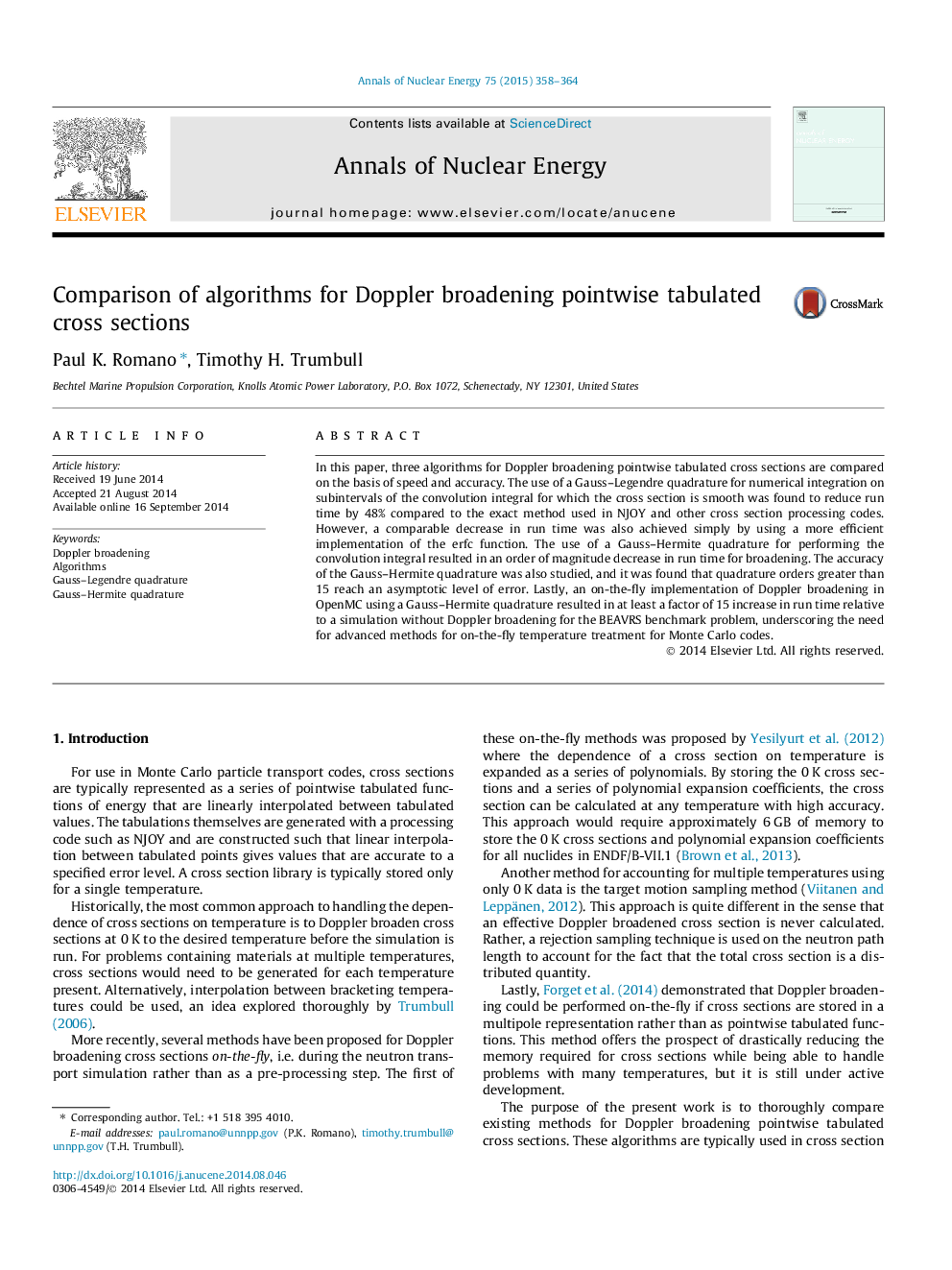| Article ID | Journal | Published Year | Pages | File Type |
|---|---|---|---|---|
| 8069078 | Annals of Nuclear Energy | 2015 | 7 Pages |
Abstract
In this paper, three algorithms for Doppler broadening pointwise tabulated cross sections are compared on the basis of speed and accuracy. The use of a Gauss-Legendre quadrature for numerical integration on subintervals of the convolution integral for which the cross section is smooth was found to reduce run time by 48% compared to the exact method used in NJOY and other cross section processing codes. However, a comparable decrease in run time was also achieved simply by using a more efficient implementation of the erfc function. The use of a Gauss-Hermite quadrature for performing the convolution integral resulted in an order of magnitude decrease in run time for broadening. The accuracy of the Gauss-Hermite quadrature was also studied, and it was found that quadrature orders greater than 15 reach an asymptotic level of error. Lastly, an on-the-fly implementation of Doppler broadening in OpenMC using a Gauss-Hermite quadrature resulted in at least a factor of 15 increase in run time relative to a simulation without Doppler broadening for the BEAVRS benchmark problem, underscoring the need for advanced methods for on-the-fly temperature treatment for Monte Carlo codes.
Related Topics
Physical Sciences and Engineering
Energy
Energy Engineering and Power Technology
Authors
Paul K. Romano, Timothy H. Trumbull,
